The indigenous people of the Andes call Mother Earth Pachamama. All communities in different geographies that show respect to Mother Earth are embraced by her fertile lands. And the spirit of Pachamama is born from this common respect!
In Pachamama, many natural and artistic approaches of different cultures are shaped around this ancient concept. Pachamama is a home for every creature that wants to be a guest of the living space. It puts production and coexistence at the center; it goes beyond the modern consumption habits by becoming a unique part of a living and evolving culture.
The artworks and motifs created by the artists and designers in Pachamama benefit from local resources to approach the universal. Each one offers glimpses to balance the energy as “slow production artworks”. They reach back to the ancient civilizations and become the gateway to a new journey for every “one who came from the path”.
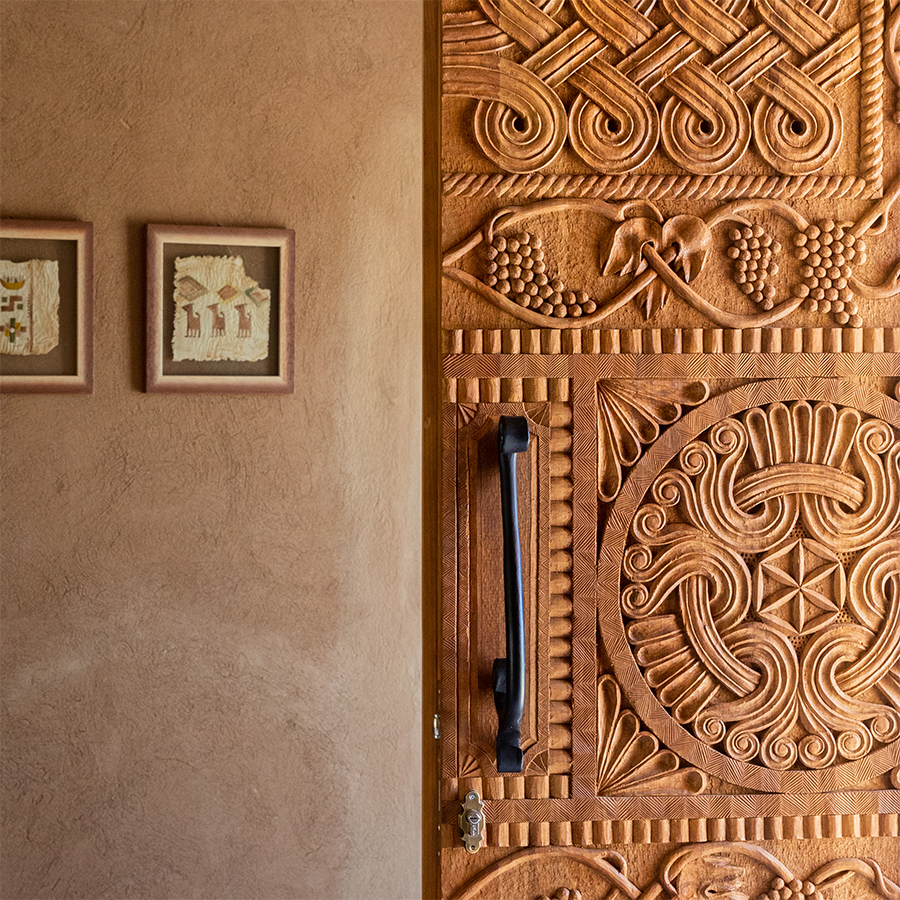
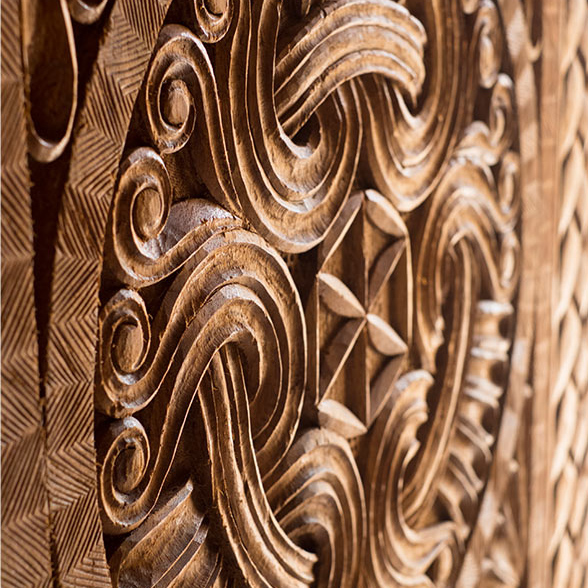
Carved by Mecit Çeliktaş, a young carving artist from the Black Sea region, the door of Pachamama invites its guests to live together in harmony with nature; it is a bridge that connects hearts, souls, past, and future. An ancient symbol lies at the heart of the door as a present-day storyteller of the history and culture in a geography stretching from Zigana to the Caucasus, which we come across within the historical mosques and churches built by the nations that have managed to live in harmony with both nature and each other. This door, named “The One Who Came from the Path” by the artist, symbolizes the fertile lands of the Aegean and the Black Sea as a perfect indicator of human creativity, while turning into the carrier of an ancient symbol and a unique craft that has perhaps almost disappeared.
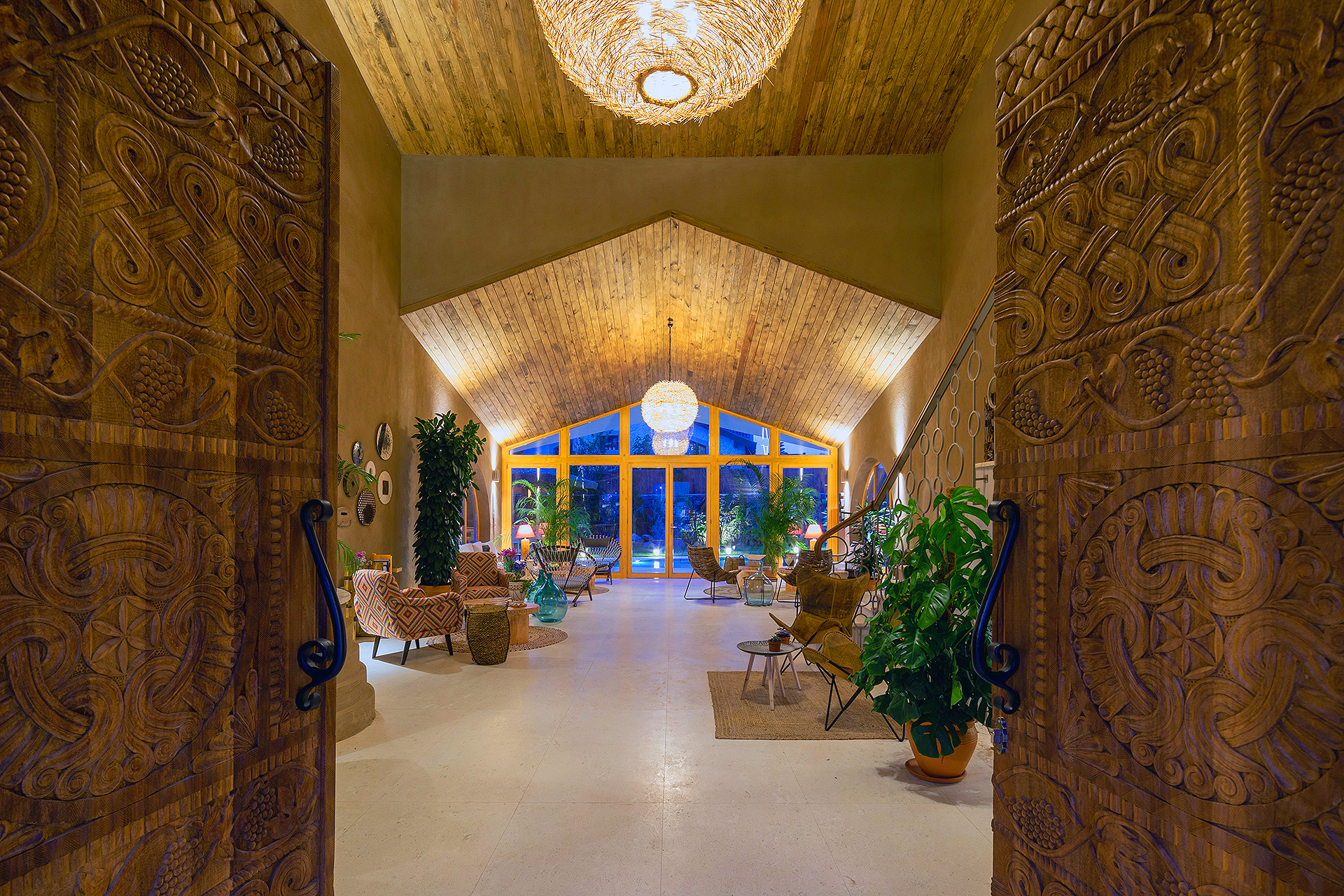
“The One Who Came from the Path” leads you to a grand hall, named “The Breath”. This space, welcoming the wind in and out, is a result of a scrupulously-processed architectural design. Like nature itself, “The Breath'' accompanies you in every moment with a refreshing color palette, resembling a living creature that breathes, and allows the light and the wind to touch you with a magnificent energy. “The Breath” creates a clear mind and refreshment by healing the body and calming to the soul.
Every material used here, is a piece of the living nature and the human spirit that connects with it.
The non-toxic building materials in Pachamama surround you like nature itself. Clay plaster purifies the moisture in the environment, and spreads throughout Pachamama for a clean and healthy body.
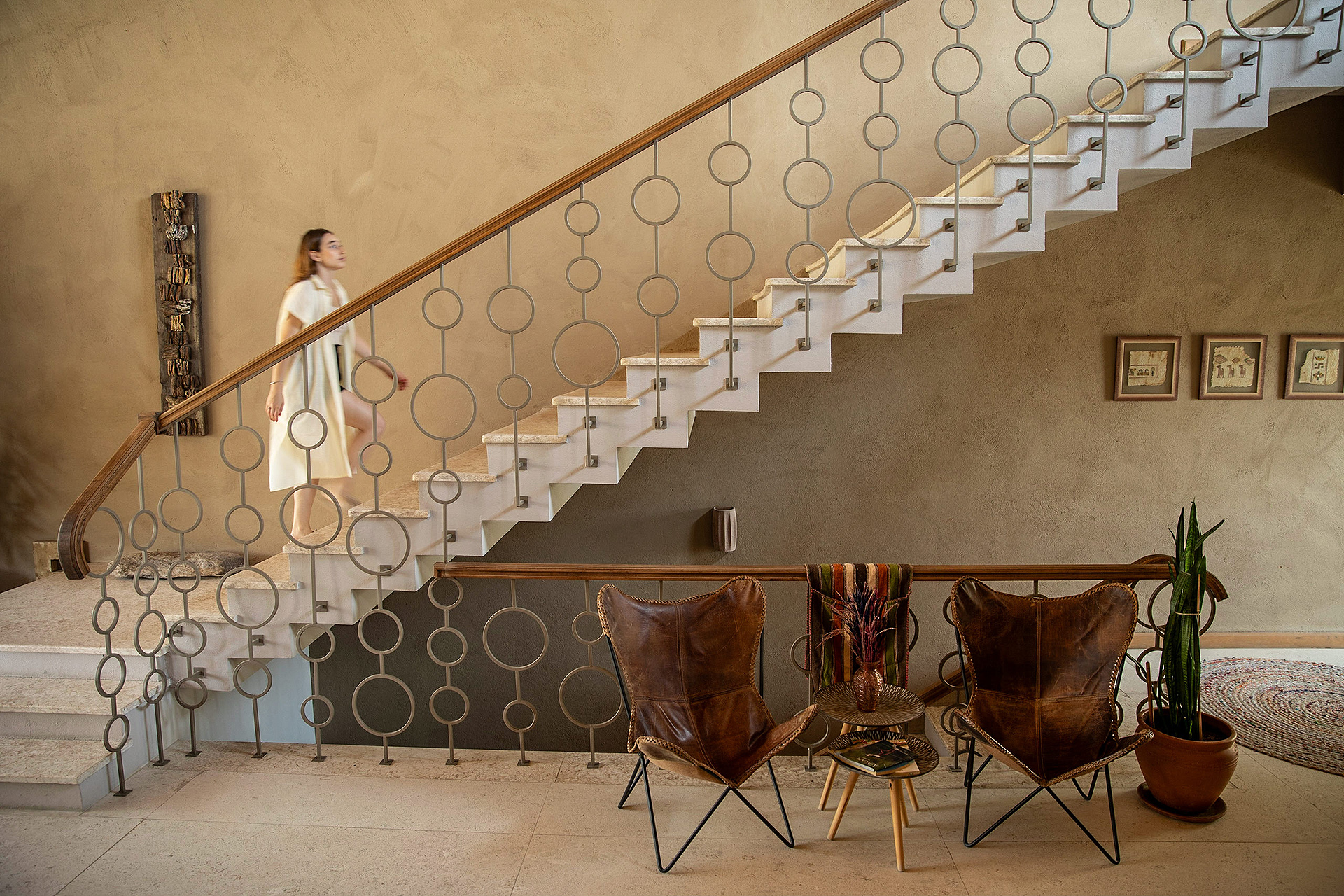
Inspired by nature and local culture, Pachamama yearns for craftsmanship and slow consumption. Every corner of Pachamama is built as a living space, aiming to balance the disconnection and alienation from nature brought about by the modern world.
Today, Pachamama pays homage to the memories of the past and creates inspiration for the future as a building with a memory. This unique depth gives Pachamama a soul, which in turn offers its guests a balancing experience!
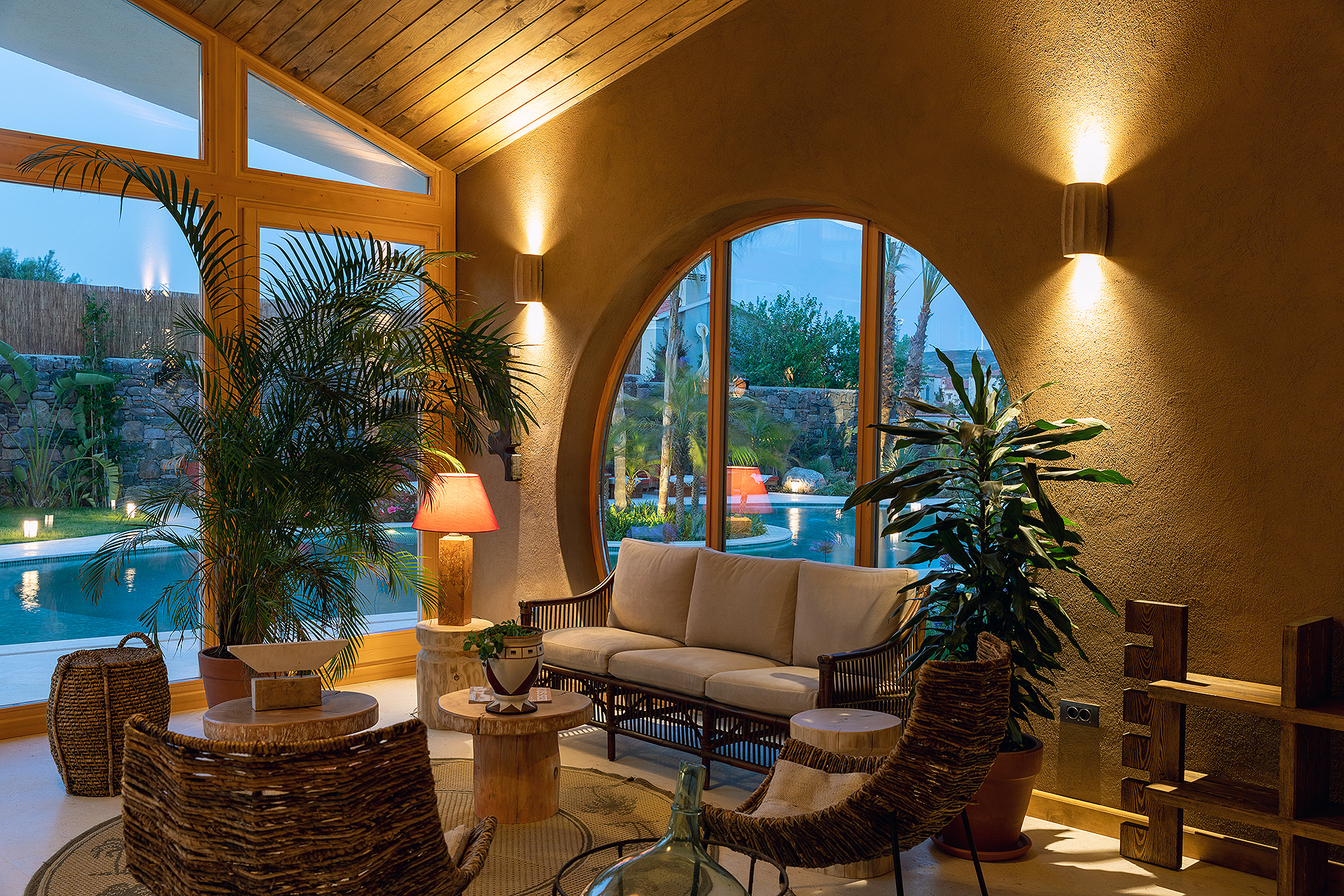
Two "Moon Gates", positioned in the east and west directions according to the sun, both maximize the benefit of sunlight and support the theme of "wealth" in traditional Chinese architecture by bringing the abundance of nature into the space. Thus, while making the interior space more magical, attractive, and lively with the sun's rays, it detaches it from the outside world and includes it in the life inside, and ensures that the inner life is renewed with fresh energy. The Moon Gate invites you to discover the connection not only between inside and outside but also between you and nature.
Supporting the visual connection between the lobby and the garden and opening towards the pool, the "Moon Gate" builds the balance of earth and water, reminding us once again of the most basic source of life. Through Pachamama's "Moon Gate", the solid and rooted energy of the earth and the flow and vitality of water come together.
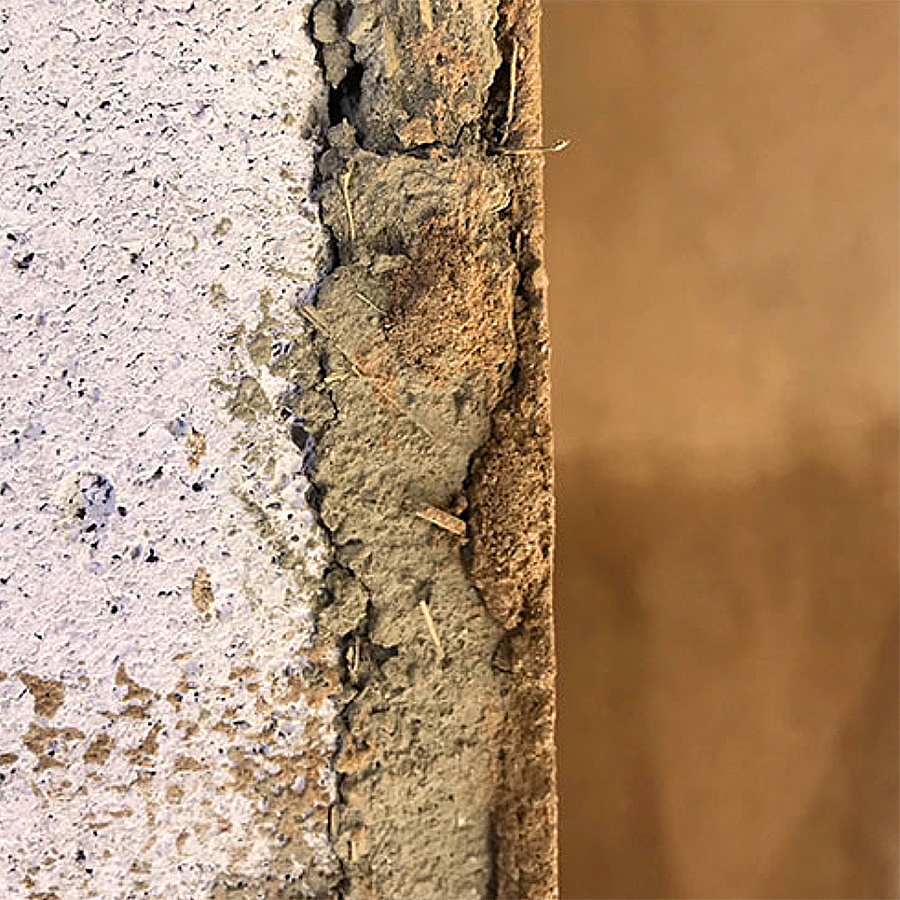
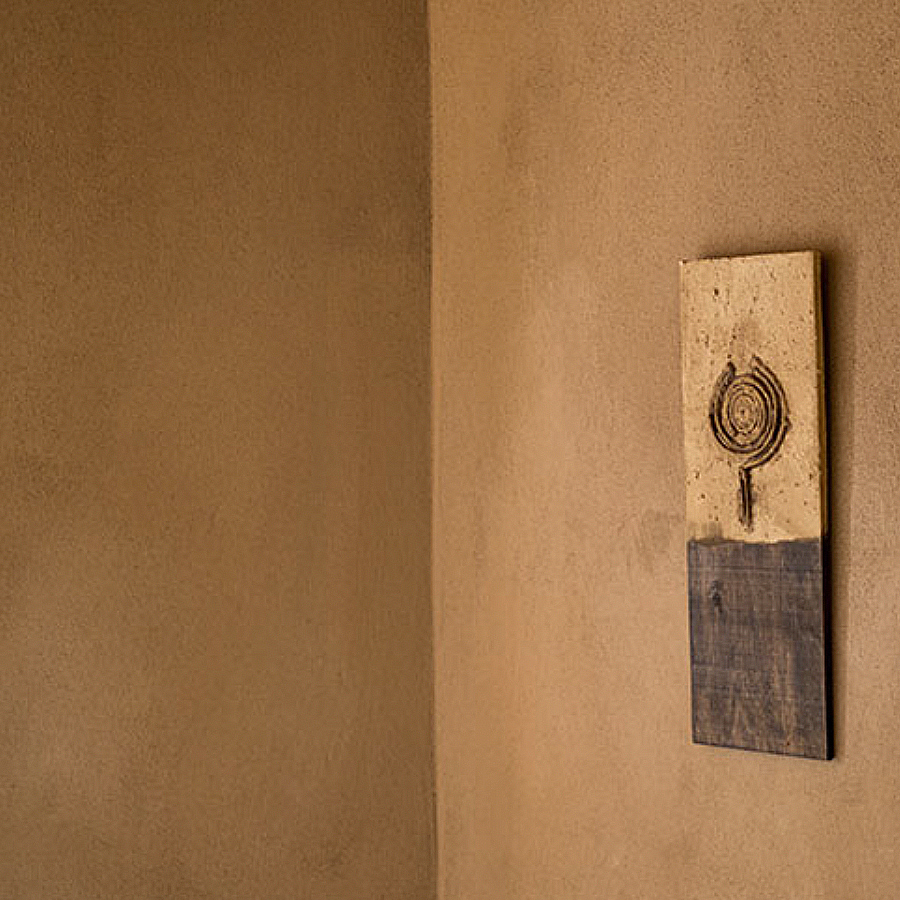
Pachamama is not only based on a set of materials but also on labor and wisdom. This labor, wisdom, and thousands of years of tradition can be traced to the clay plaster used in the construction of Pachamama. This understanding emphasizes the connection of space with nature and culture.
Clay plaster is not just an aesthetic choice but an effort to be a carrier of traditions, a reminder of roots, and living in harmony with nature, beyond that.
The first layer of the walls, which live and breathe thanks to non-synthetic materials, is adobe plaster, a mixture of clay, sand, and straw. The second layer consists of clay shaped by thousands of years of accumulation, tile dust, which makes the plaster durable and increases its perfection, and linseed oil, which creates flexibility and protection. These materials naturally cool the air, balancing not only the humidity but also the energy of the space.
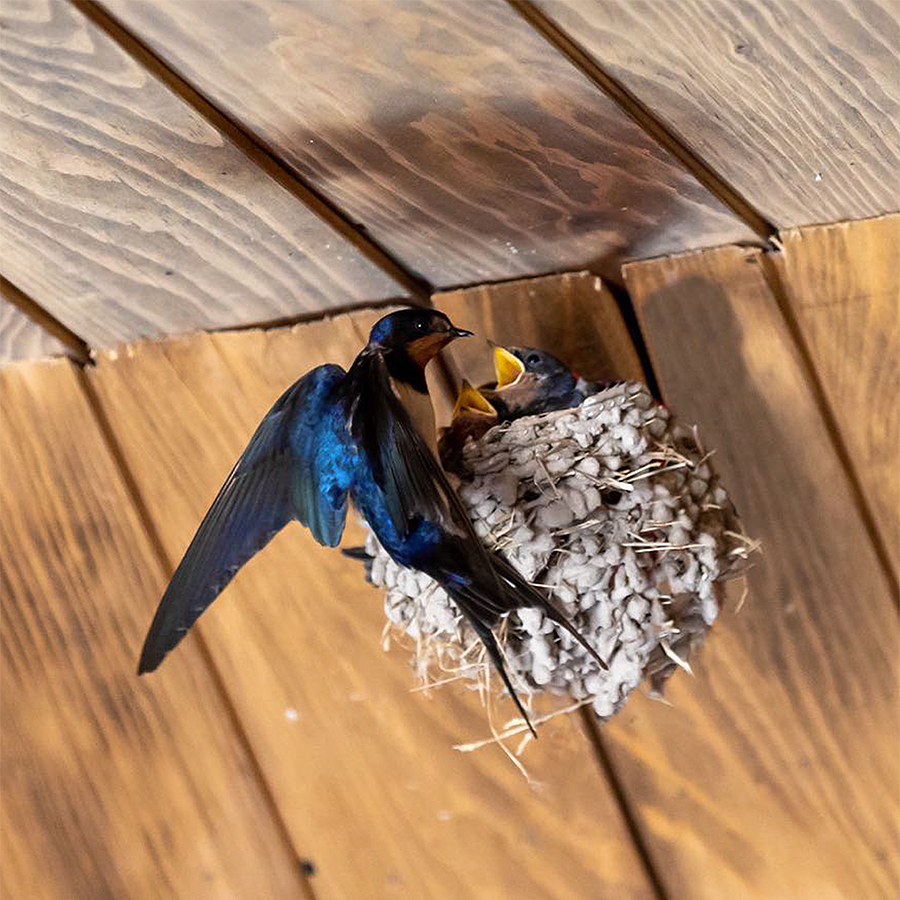
When a pair of swallows built a nest on the ceiling of "The Breath" during the construction of Pachamama, the plans were updated and great care was taken not to disturb the nest. The fledglings took their first flight in the spacious hall of "The Breath" and became part of the Pachamama spirit. The window in the upper corridor was always kept open for them, hence it was named "Swallow Door". The swallow family left in the fall to follow their own path and returned in early summer. The family built a bigger nest and raised new chicks that would fly away in the fall, helping us make sense of the cycle of life.
Pachamama has been home to all living creatures since its first day, as a living being. Swallows are the first guests of Pachamama with their respect for nature and their common knowledge. And the technique they use to build their nest in the ceiling of "The Breath" is almost identical to the adobe technique used during the construction of Pachamama. They use their nests of plant stems, feathers and mud today, as they did many years ago, to keep their families together and to welcome long journeys. Each one remains a unique reminder of the freedom of the sky and the perfect workings of nature.
Still part of Pachamama's spacious hall today, the swallows contribute to strengthening the spirit of Pachamama. With the nest they have built, they remind us that we have a common knowledge and create an unlimited source of inspiration to feed on this knowledge. And this common knowledge turns into a common respect for all of us.
During your visit to Pachamama, you can see the swallow nests on the ceiling of "The Breath" and embrace this marvelous togetherness...